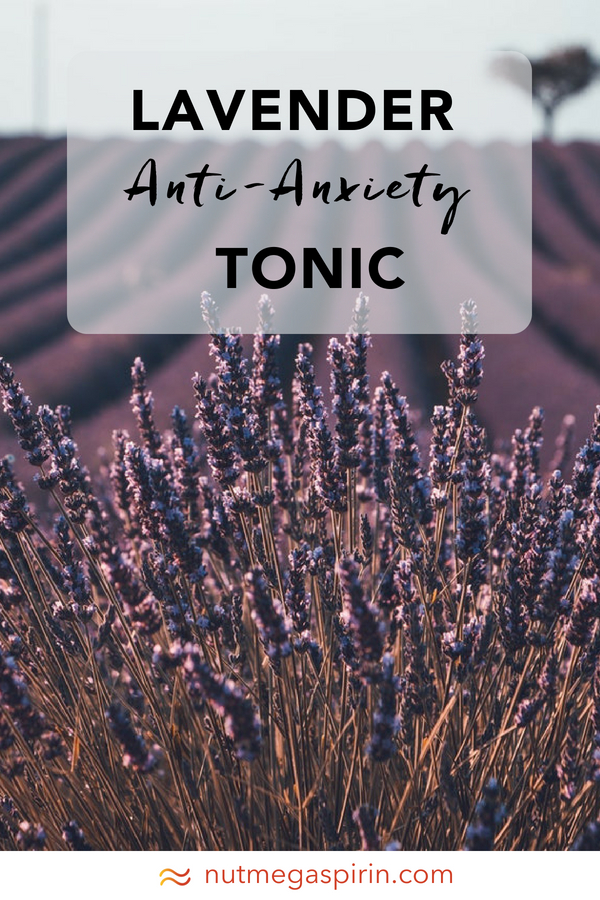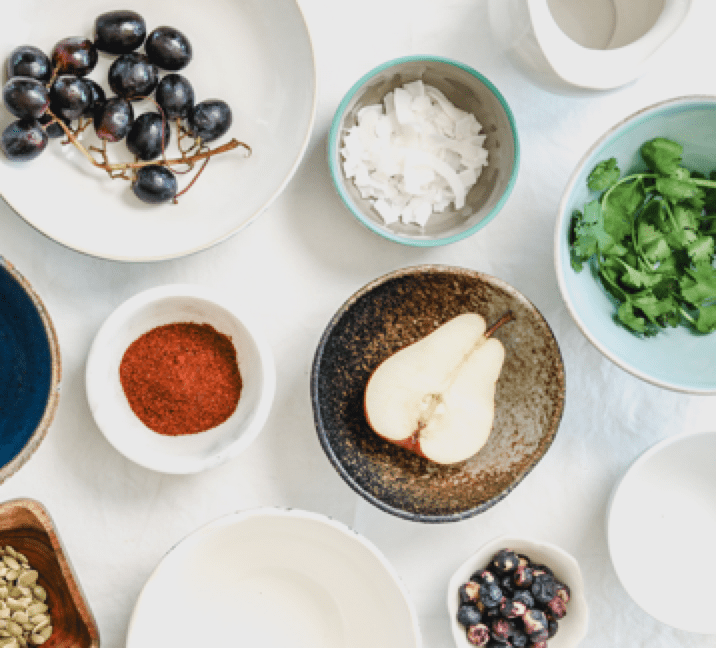Lavender Fizz - Anti Anxiety Tonic

How It Works
Lavender is one of my favorite herbs for anxiety. It helps to calm the mind and make space for the anxious or nervous person to think about something besides their anxiety—this can be a great first step toward making change. In my book, Recipes from the Herbalist's Kitchen, I discuss using it in culinary and medicinal preparations ranging from Lavender Fizz to Steak with a Lavender and Black Pepper Crust. I also find that lavender tea or glycerin tincture are soothing ways to use the herb. A calming aromatic herb from the mint family, lavender helps soothe anxiety, restlessness, anger, tension, and depression.
One of my favorite things about lavender is that the aromatherapeutic properties of the plant are as powerful as internal applications, so anytime you smell the plant the medicinal effects are already working their magic. This means that when you cook with lavender, the healing is in both the preparation and the finished product!
Lavender Fizz
This flowery, slightly sweet drink is a cross between soda and champagne and can contain a very small amount of alcohol. The carbonation is a natural by-product of the fermentation process, a sign that the fizz is active and alive. Naturally fermented beverages are energizing and excellent for digestion. Lavender, a calming aromatic herb from the mint family, helps soothe anxiety, restlessness, anger, tension, and depression. Let the bubbles in this drink lift you up!
. yield: 8 cups .
7½ cups water
½ cup raw honey
1 tablespoon white wine vinegar
4 tablespoons fresh or dried lavender flowers
1 lemon, sliced into ¼-inch rounds
1. Combine the water, honey, vinegar, lavender, and lemon in a clean half-gallon mason jar, cover with a lid, and shake well until all the honey has dissolved. Set the mixture aside to ferment, covered, at room temperature for 2 days.
2. After 2 days, strain out the lavender and lemon. Transfer the liquid into glass or plastic bottles with tight-fitting lids, leaving about ½ inch of headroom in each bottle. (The lids need to be tight fitting to contain the carbonation that is going to develop. If the lids do not fit tightly, the carbonation will escape from the bottles, leaving you with a still delicious yet noncarbonated beverage.)
3. Set the bottles aside in a cool, dark place to ferment for 3 days. Then open one of the bottles to taste it. If the soda is still not carbonated, put the lid back on and let the bottles continue fermenting. Taste regularly. The length of time needed to produce carbonation will vary depending on the temperature and the activity of the yeasts in your fizz.
4. Once the soda reaches the desired carbonation, transfer the bottles to the refrigerator. The cold temperature will slow the fermentation process and keep the carbonation level as it is.
Note: Sometimes a bit of mold can form on the surface of the soda during the fermentation process. This is just surface mold, and the soda is still good; simply remove the mold and proceed.
“Excerpted from Recipes from the Herbalist’s Kitchen © by Brittany Wood Nickerson, photography © by Alexandra Grablewski, used with permission from Storey Publishing.”
What You’ll Need
Difficulty
nor hard Somewhat
challenging Very
challenging






How long does the lavender fizz stay good for?
This is super awesome! Make sure you burp (open your containers a bit to release some built up carbon) your bottles once a day after you transfer to the containers for the 2nd ferment as glass bottles can explode from built up pressure!
I can't wait to try this and learn more about your herbal tonics!